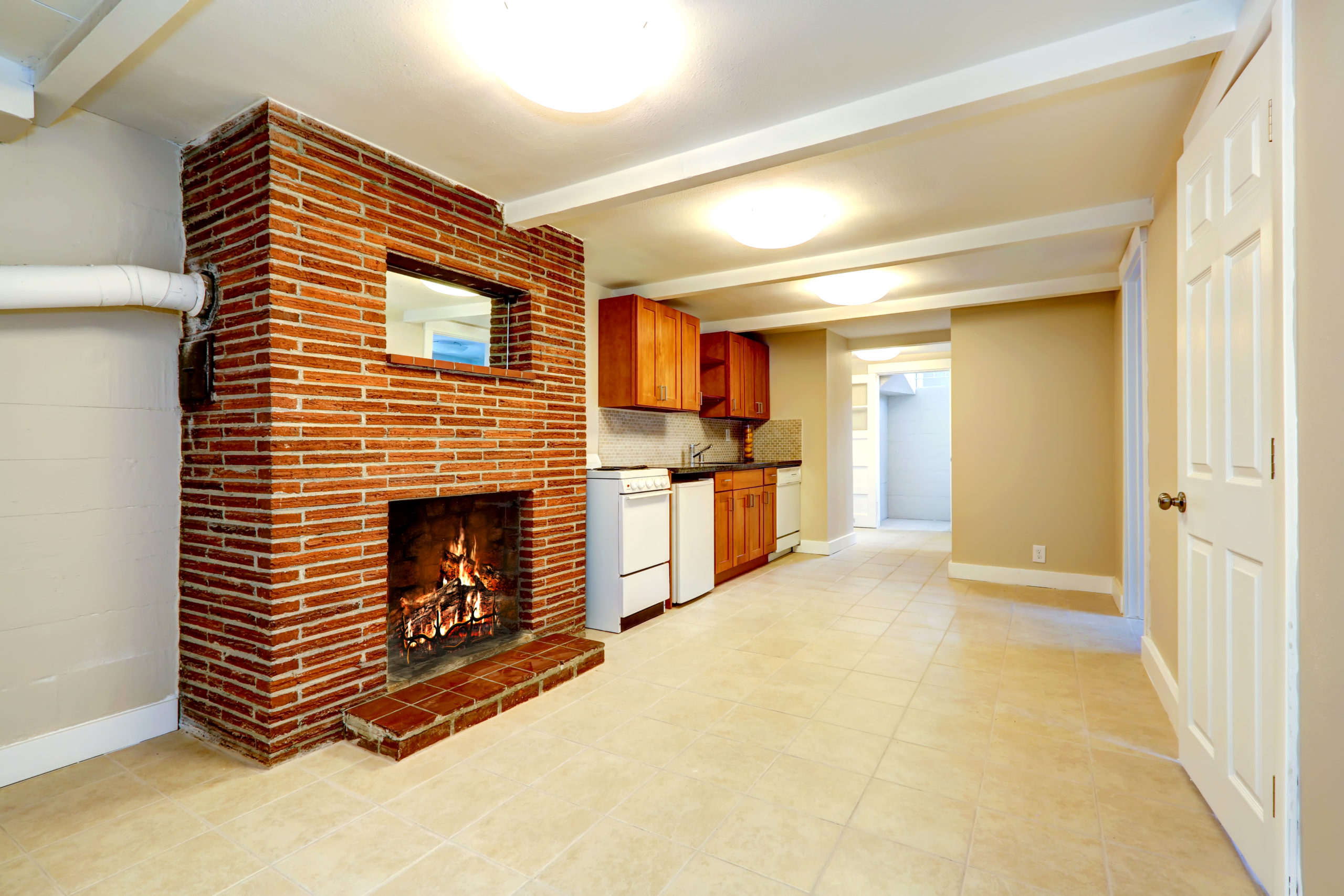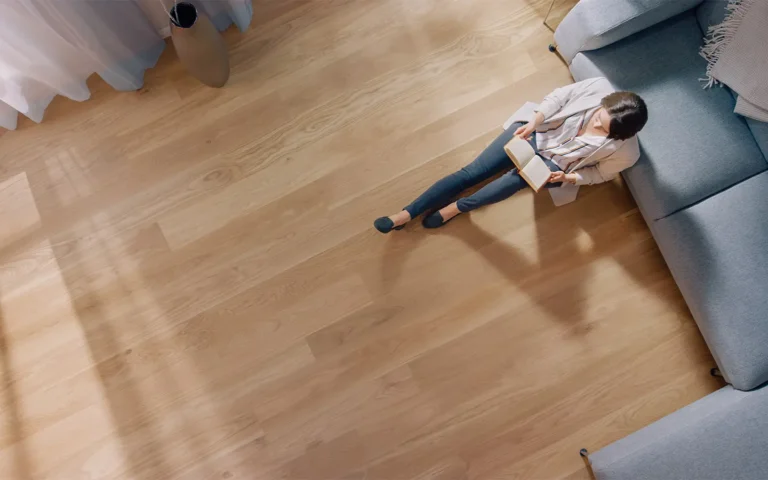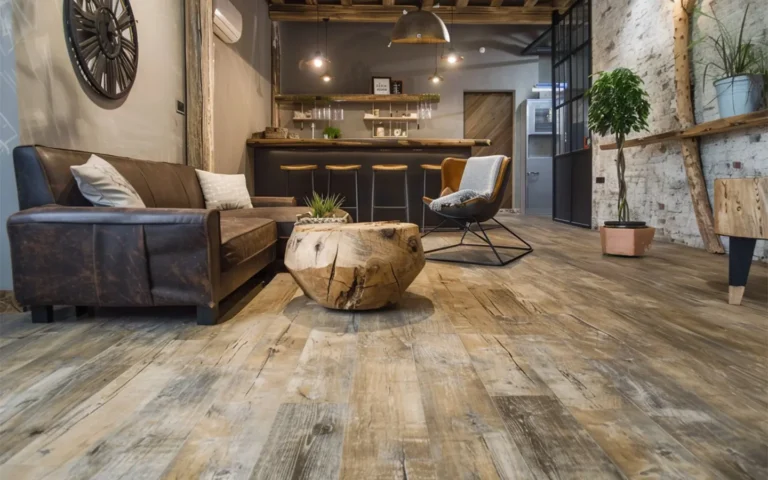When choosing vinyl plank flooring, the edge style is a surprisingly important decision. It goes beyond just color and pattern – the way those planks connect impacts the overall look and feel of your space. While terms like “square” or “beveled” might be familiar, knowing the pros and cons of each is key to making the best choice for your home.
This article cuts through the confusion, providing clear information on beveled vs. non-beveled vinyl planks. We’ll cover:
- Aesthetics: How edge styles create different visual effects (modern vs. traditional looks).
- Practicality: How edge style impacts cleaning, durability, and the visibility of imperfections.
- Installation: Does edge style influence the ease of your flooring project?
By the end, you’ll have everything you need to choose the perfect vinyl plank flooring edge style to transform your space.
What are Beveled Edges?
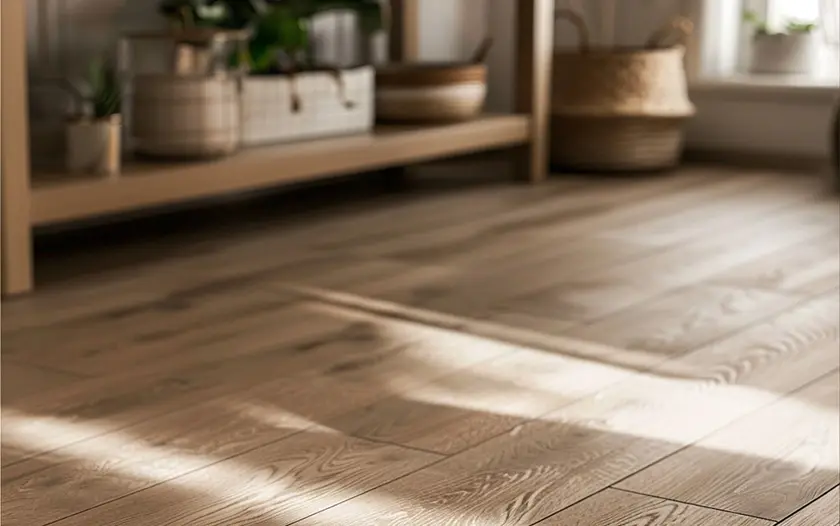
A beveled edge refers to a slanted or angled cut along the edge of a material, particularly in flooring planks. This creates a softer, more gradual transition compared to a sharp 90-degree angle.
When used in flooring, these beveled edges create small grooves outlining each installed piece. This adds a sense of dimension, texture, and depth.
This is because the beveled cut visually separates the planks and highlight their individual appearance. The purpose of this is both aesthetic and practical. Beveled edges help disguise minor imperfections in the subfloor, making for a smoother installation experience.
Edge style is a term that describes the way the flooring’s sides and ends are cut on each plank, and the appearance that is achieved once the panels are engaged together. The edge style accentuates the floor’s design intention and decor. The majority of laminate, hardwood and vinyl plank floors have some sort of beveled edge.
Interestingly, the beveled edge concept isn’t limited to just flooring; you’ll also find it in furniture, countertops, and even decorative tilework. In laminate, hardwood, and vinyl plank flooring, beveled edges are particularly popular. This is used to increase realism and achieve the look of natural wood or stone.
Beveled edge vinyl flooring is a popular choice for homeowners for a reason. It offers a ton of advantages that go beyond just aesthetics (although it definitely looks great!). Here’s why you might consider beveled vinyl for your next project:
Best Brands of 2024
Pros of Beveled Edges
Beveled edge vinyl flooring is a popular choice for homeowners for a reason. It offers a ton of advantages that go beyond just aesthetics (although it definitely looks great!). Here’s why you might consider beveled vinyl for your next project:
- Boosted realism: The subtle grooves created by beveled edges mimic the look of individual planks in hardwood or stone flooring. This can be a game-changer, especially for vinyl that’s designed to resemble those natural materials. In my opinion, beveled edges really elevate the overall look and feel of vinyl flooring.
- Subfloor savior: Let’s face it, subfloors aren’t always perfectly level. Beveled edges come to the rescue here! The grooves help to hide minor imperfections, making installation smoother and the finished floor look that much more polished.
- Dimensional delight: Beveled edges add a touch of dimension to your vinyl floor. It’s not just a flat expanse anymore – it has texture, depth, and visual interest. This can make a room feel more spacious and dynamic.
- Durability potential: Some beveled edge vinyl planks are designed with extra structural support built into the edges. This can potentially reduce chipping and wear over time, especially in high-traffic areas.
- Cleaning considerations: Here’s a point to consider – beveled edges do create grooves where dirt and debris might settle. While some argue these grooves are easier to sweep clean than a flat surface, others might find them a bit more high-maintenance. It really depends on your cleaning preferences and the amount of traffic the floor will see.
Cons of Beveled Edges
While beveled edge vinyl has its perks, it’s important to consider the potential downsides before making a decision. Here’s where things might get a little tricky:
- Dust and crumb collector: Those little grooves that make your floor look amazing? They can also be where dust, crumbs, and pet hair like to hang out. This might mean more frequent sweeping or vacuuming to keep your floors looking their best, especially if you have a busy household.
- The line issue: Depending on the design and installation, beveled edges can make the lines between individual planks more noticeable. This might break up the seamless look some people prefer, especially if you’re aiming for a very smooth, uniform surface. Ultimately, some people simply don’t like the look of beveled edges.
What are Non-Beveled Edges?
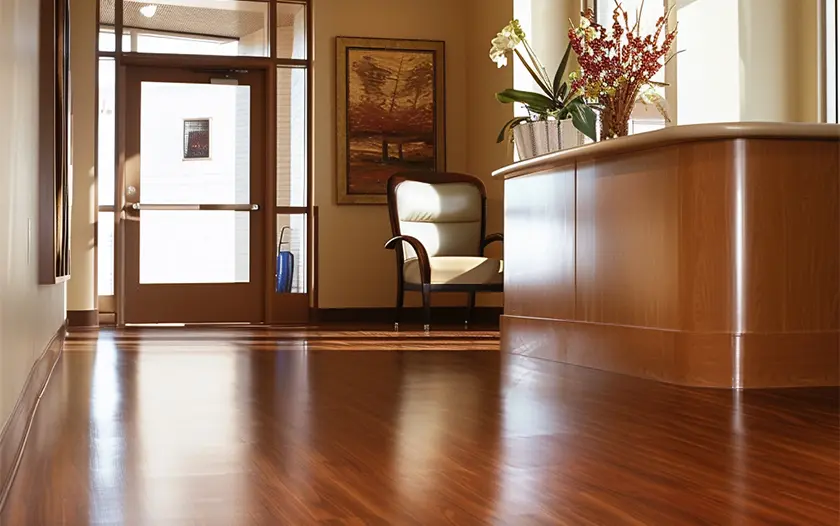
Non-beveled edges, also called square edges, are the opposite of beveled edges. They are flat cuts at a 90-degree angle to the surface of the material. Here’s how they compare to beveled edges:
Non-beveled edges create a clean, seamless look. They won’t have the grooves or shadows that beveled edges have.
Since they don’t have grooves, non-beveled edges won’t hide imperfections in the subfloor as well as beveled edges. A perfectly flat subfloor is ideal for a good final result with non-beveled edges.
Non-beveled edges may be slightly easier to clean superficially because there are no grooves to trap dirt. However, any imperfections in the subfloor might telegraph through the flooring and become more noticeable.
Here are some situations where non-beveled edges might be a good choice:
Modern or minimalist design: The clean lines of non-beveled edges complement these styles well.
High-traffic areas: Square-edged tiles tend to be slightly more durable against scratches and dents.
Click-lock vinyl flooring: These tiles often have a very tight fit that minimizes the appearance of gaps, even without beveled edges.
Choosing Vinyl Flooring Edges
Choosing vinyl flooring edges boils down to aesthetics and practicality.
Beveled edges increase realism with natural-looking shadows, hide subfloor imperfections, and manage spills with localized grooves. Ideal for rustic or traditional styles and uneven subfloors. Downside: Might trap more dust.
Non-beveled edges offer a clean, modern look, easier initial cleaning, and potentially better scratch resistance. Perfect for minimalist designs, high-traffic areas, and click-lock vinyl with tight seams. However, imperfections show more readily.
Beveled edges add depth but require more maintenance. Non-beveled edges prioritize clean lines but demand a smooth subfloor. Choose what best complements your style and space!
About The Author

Courtney Daily
March 13, 2024
Courtney is a freelance writer who wears many other hats: kindergarten teacher by day, Broadway diva in the shower. She is a transplant Hoosier who originated in New England. When she isn't writing in her spare time, you will find her reading history books, arguing with her latest knitting project, or being beaten by her kids at most games.
